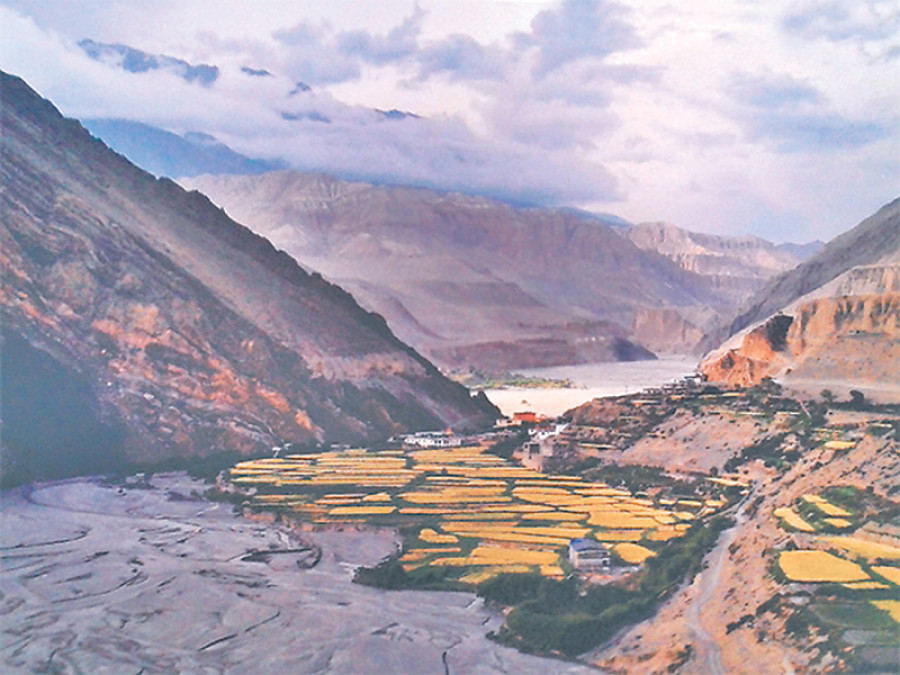Opinion
Global changes, local responses
District and village level leaders will have a key role in helping vulnerable communities deal with climatic changes
Navin Singh Khadka
While writing about wannabe Kathmandu mayors for this column two weeks ago, the prospective elected local representatives in rural areas kept coming to mind—mainly because the issues they will need to address are more pressing. I had no idea then that I would have to pen something about them so soon, but “nature’s” plan changed this. We are talking about monsoon here.
Patterns of monsoon
The Indian Meteorological Department (IMD) forecast a normal monsoon for this year and this was good news for Nepali farmers. But in the past few weeks, scientists have been giving different advice.
It started with an updated joint forecast by the US’s National Oceanic and Atmospheric Administration (NOAA) and the International Research Institute for Climate and Society (IRICS). They said there was now a dramatic increase in the probability of earlier than expected El Nino conditions, upping uncertainty about the monsoon.
El Nino is a climate cycle created by the heating of the Pacific Ocean and Eastern Indian Ocean that results in weakened monsoonal winds. It was this condition that led to the low monsoonal rainfall in 2015 and triggered deadly droughts in South Asia.
Based on the conditions over the Pacific in early April, the probability of a return of El Nino during the monsoon months between June and September was forecast to be below 50 percent. But things have changed in the past few weeks. The updated forecast by NOAA and IRICS shows that there is a 55 percent chance of resurgence of El Nino from May to July and that probability rises to 70 percent from July to August.
In the wake of all this, India’s central government has asked the states to review their preparedness for the upcoming summer crops season should something go wrong with IMD’s monsoon forecast.
“Keeping such uncertainties in mind, the Union agriculture minister Radha Mohan Singh wrote to the chief ministers of states and union territories ‘for review of the states’ preparedness in managing weather related contingency, if any, in advance so that the possible adverse impact of sub-par rainfall on the farmers can be mitigated’.” the Times of India reported earlier this week.
“It would, therefore, be helpful if a review of the state of preparedness in managing any weather related contingency is carried out in advance so that the possible adverse impact of sub-par rainfall, if at all, on the farmers can be mitigated,” the newspaper quoted Singh as saying.
Going by the news report, Singh did not just have words of caution for farmers but had something of substance to offer as well. “He also informed that the central government has already permitted states and UTs to earmark 25 percent of funds under centrally sponsored schemes as flexi-funds which could be used for
mitigation of natural calamities.”
Nepal’s response
Indian officials haven’t said that the IMD’s monsoon prediction will have to be revised but their contingency plans speak volumes about the seriousness of the situation. If Delhi has so much to be concerned about monsoon and farm outputs across the country, can Nepal afford to be indifferent to what its agriculture sector could face?
This is where local authorities can play a role. Those in the district and village levels can help the farmers cope with uncertainties such as whether there will be a normal monsoon or not. Of course, they will not have a magic wand to solve all the problems, but they can at least do something for preparedness. Even passing down crucial messages such as updates about the possible deficit of monsoon because of El Nino or other conditions will be a huge service to the country’s agriculture sector. If they could bring the issues of farmers to the centre and get policy makers, researchers and lawmakers to address them, they would be doing a great service to a country that is highly agro-based.
Above all, if these local representatives are aware of how much climate finance the country receives in the name of the vulnerable communities, mainly in the rural areas, they can make informed decisions for them. Significant amounts of funds are coming in under climate adaptation programmes and they are meant to be used to minimise the impacts of climatic change.
Floods, droughts, erratic rainfall and their impact on our agriculture and natural resources are issues of huge concern. The science, finance and, of course, the politics of climate change are what these local leaders are supposed to know. Too far-fetched? If they can talk about complex political ‘isms’ with high levels of confidence, there is no reason why they cannot understand the issues that their voters face daily.
It is a different thing if they do not want to understand these issues. The best example is what is known as the “dozer disaster” in many rural areas. In the name of local development, bulldozers were used everywhere to carve out roads on mountains sides without assessing the vulnerability of the places. As a result, there was an unprecedented number of landslides across the country, killing and displacing the people whom these development efforts were supposed to serve.
In a country where a top-down approach—centre reaching out to farmers and communities in rural areas—has hardly worked, might a bottom-up style work? It all depends on whether local leaders are able to demonstrate this change in approach through the way they deal with the changing climate.
Khadka is a BBC journalist based in London




 12.88°C Kathmandu
12.88°C Kathmandu












